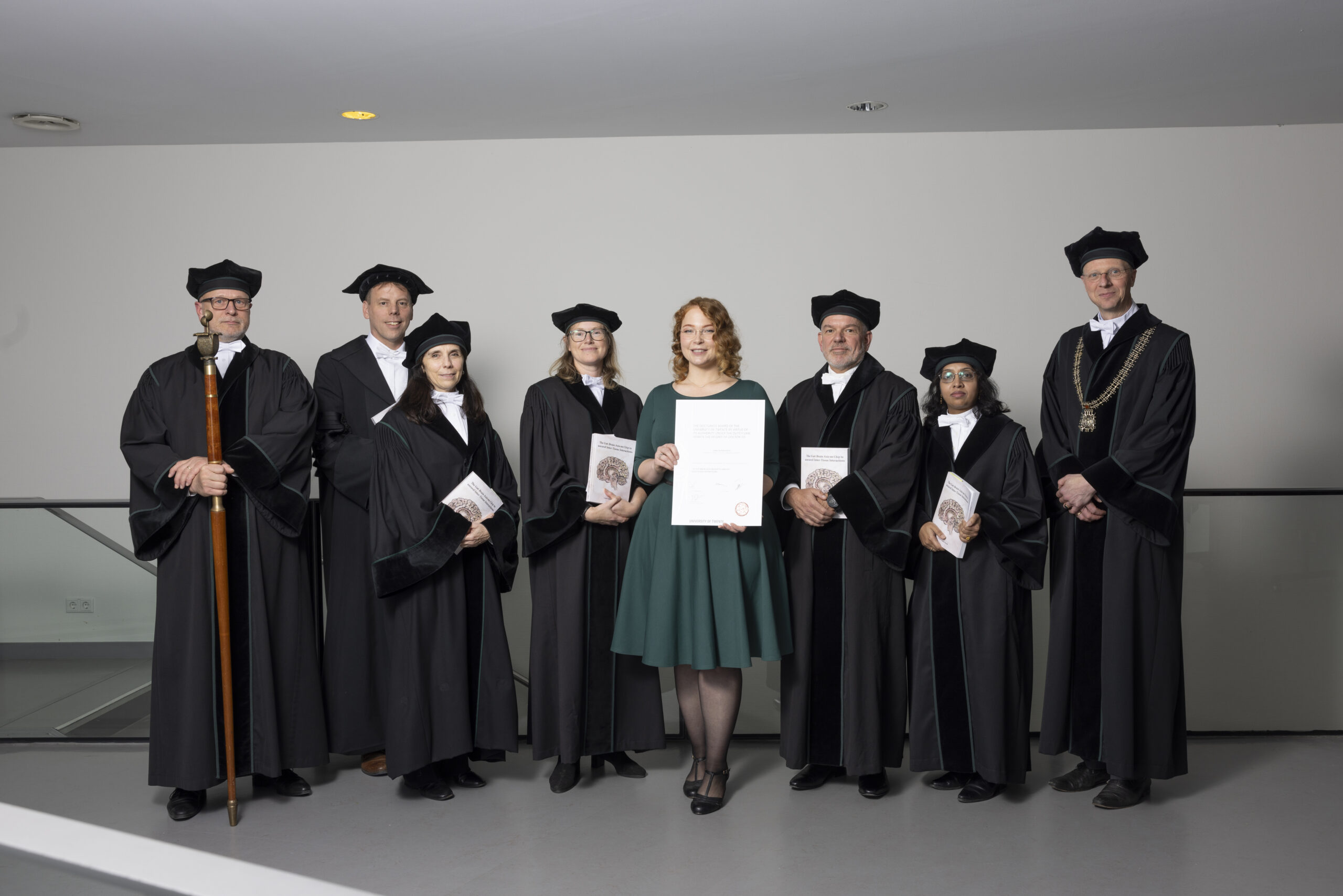On October 31st, Lena Sophie Koch successfully defended her PhD thesis titled “The Gut-Brain Axis on Chip to Unravel Inter-Tissue Interactions”
The microbiome-gut-brain axis (MGBA) represents the bi-directional path for interaction between the gastrointestinal tract and the central nervous system. The vagus nerve offers a direct route of communication within the MGBA as many modulatory effects of gut microbiota are directly facilitated via vagal activation. Dysregulation of the relationship between the microbiota and the host is implicated in a large number of diseases and pathological conditions involving the MGBA. Increasing evidence demonstrated that, specifically, neurodegenerative diseases (NDs) are not only confined to the brain but are progressively viewed in the context of alterations in the intestinal physiology. However, the exact mechanisms underlying remain unclear. While current in vivo models lack transferability of results and raise ethical issues, in vitro models to study gut-brain interactions often have unilateral approaches and lack representativeness of the complex multi-organ system. This thesis describes Lena Sophie Koch’s efforts into recreating various components of the microbiome-gut-brain axis as well as creating a custom microfluidic chip to enable parallel multi-organ culture with the aim to gain a deeper understanding of processes underlying gut-brain communication.
Chapter 2 introduces organ-on-chip technology, combining stem cell-derived organoids with microfluidics to overcome limitations of conventional culture methods. Key advancements in organoid modeling for organs like the brain, gut and liver are discussed, alongside challenges and future directions in multi-organ integration. Potential applications in disease modeling and regenerative medicine are explored.
Chapter 3 focuses on cerebral organoid development, presenting an optimized method for forming embryoid bodies (EBs) with improved size consistency and reproducibility. Chapter 4 provides a step-by-step protocol for generating and maturing iPSC-derived cerebral organoids, addressing challenges like variability and necrosis, enabling studies on brain aging.
Chapter 5 shifts to the gut, examining regulation of the intestinal mucus layer. Dysregulation of mucin-2 production, essential for gut-brain interactions, is linked to inflammatory pathways. Lena’s findings highlight the roles of the microbiome and vagus nerve in mucus development, proposing strategies to improve intestinal in vitro models. Chapter 6 investigates mucin-2 trafficking in goblet cells, uncovering a novel pathway involving COPII vesicles and proteins like TANGO1 and KLHL12, regulated by TGF-β. Disruption of this pathway contributes to ER stress and mucus deficiencies seen in inflammatory bowel disease (IBD). Gene expression analysis of colonic tissues from the 1000IBD project confirmed the findings.
Chapter 7 presents an intestinal epithelium model integrating Caco-2 and HT29-mtx cells, which produced a functional mucus layer enabling microbiota inclusion. Probiotic Lactobacillus acidophilus enhanced mucin-2 expression and barrier integrity, demonstrating beneficial interactions.
Chapter 8 takes first steps towards developing a microbiota-gut-brain axis model and presents the design and fabrication of a microfluidic platform to support integration of this complex multi-organ system. Differentiations for stem cell-derived hippocampus brain organoids (HBOs) and vagus-nerve like neurons (VNs) were established and subsequently characterized for the expression of relevant markers and functionality. Co-culture of HBOs and VNs on the microfluidic chip demonstrate that the chip supported their growth and proliferation in their designated chip compartments, while specialized microchannels facilitated axonal extensions into either the HBO or VN compartment leading to reciprocal innervation of both tissues. Preliminary studies indicated the physiological functionality of this connection as beneficial effects from microbiota-derived metabolites were mediated to the HBOs by the presence of the VN.

